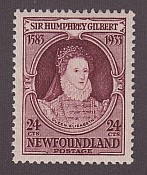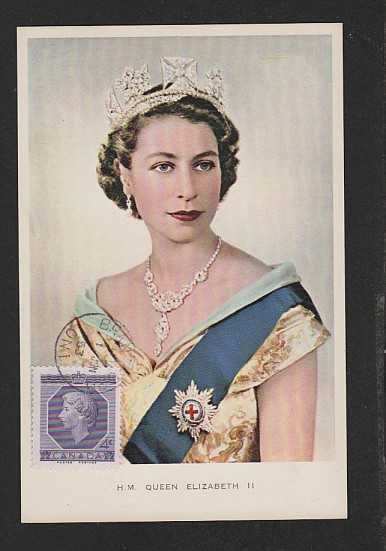
Discussion - Member to Member Sales - Research Center

Discussion - Member to Member Sales - Research Center

Rich


Login to Like
this post
According to Gibbons, unofficial experimental trials of perforations for rouletting and perforating were privately made. The stamps on which these trials were conducted were used later by the post office.

Login to Like
this post
In my Gibbons catalogue of 2013 there appears to be only one reference for a rouletted Id red brown.
It states:-
1848 Watermark Small Crown Rouletted approx 11.5 by Henry Archer. Plates 70 & 71
Catalogue value £25000 for Unused. There is no entry for Used.
I will dig out my Queen Victoria Specialised and see if there is any additional information

Login to Like
this post
Ian, the stamp you referenced is Gibbons #16a.
The note in Gibbons includes the name Henry Archer, who is the person who created the test perforations on the imperf stamps. Gibbons #16b is the perf 16 (plates 90 through 101) that Archer also created in 1850. They are rare, but a bit more common than #16a. The government got into the act in 1853 (Gibbons #16c). Looks like this one is only known on cover. At 18,000 GBP at bit on the scarce side.

Login to Like
this post
Yes There were trials of rouletting and of course the perf 16 is more common.
In my ancient copy (1977) of Gibbons Queen Victoria Specialised it says:-
Early Archer experiments with two Rouletting Machines. Both were failures but of one a few stamps have survived, rouletted about 11.5 (generally referred to as "12")
Trials on Archers third machine was the first to be based on perforating as distinct to rouletting. This machine proved unsatisfactory at first but after extensive alterations was finally approved for use. That is how the perf 16 came about. The stamps which resulted from these trials were generally issued and are known used in different parts of the country, many went to the west of England
A newer edition of the QV specialised may have more information.
The photo Rich has presnted looks like it is rouletted, not perfed. If you count the "perfs" on Rich's photo they come to 11.5/12.
Rich you say it has a certificate stating the stamp is genuine. Do you have a certificate of who authenticated it ?

Login to Like
this post
From 2011:




Login to Like
this post
This is very interesting. It looks back to when it was all just starting out.
We have Sir Roland Hill to blame for the first stamp from which the hobby sprang.
We have Archer to blame for starting the different types of perforations.
Isn't it nice to be able to find who is to blame for the cause for our affliction with postage stamps?

Login to Like
this post
Its nice to know that my 1977 Queen Victoria Specialised Catalogue is still Up to date on this matter.

Login to Like
this post
This is the small document that came with the stamp as part of a larger collection,I have tried to translate with Google however it only gives me some of the meaning .
.

Login to Like
this post
The remarks on the written opinion appear to be:
"Marke echt. Private Durchstiche sind bekannt, bei losen Marken jedoch Echtheit (ob original aus der Zeit um 1848/50 stammend) nicht nachweisbar."
which is something like:
"Stamp genuine. Private roulettes are known, but authenticity (whether originally dating from the time around 1848/50) can not be demonstrated for loose stamps."

Login to Like
this post
Unfortunately I could have written that, or my brother, or my brothers parrot.
Without a Company or Philatelic Certification Company/Society Heading and a clear signature on the "certificate", the "certificate" is not worth the paper it is written on.
Rich if I was you I would try and find out a couple of reputable dealers in BC and have conversations with them.

Login to Like
this post
If I am reading the certificate correctly, the stamp is plate 80 position JD.
The experimental Archer roulette in question used plates 70 and 71. If I assume the plate 80 ID is correct, then I would guess that your stamp either has a forged Archer roulette, or it is some other private roulette.

Login to Like
this post
Yes that is the crux of the matter. What is the plate number and that can only be done from the stamp "in the flesh" by a qualified expert.
According to Gibbons Plate 80 was never used in any of the Archer "Trials".

Login to Like
this post
If this is a private perforation experimental or otherwise can one find reference info,
so far outside of this forum contacts in the UK experts are baffled but suggested this should be followed up.I might have to give in and go Royal Philatelic.

Login to Like
this post
Considering that a genuine example is worth a good amount of money, it may very well be worth the cost of the expertization to get a certificate.
The one thing you have going against you is that Plate 80 was not used (according to Gibbons) to create the test perforations/rouletting.

Login to Like
this post
As has been said the key here is the plate number. I'm surprised no one here as yet agreed or disagreed with the plate 80 assignment. I don't have the expertise for this but many collectors of GB line engraved stamps do.

Login to Like
this post
04:09:34pm
This came to me in a collection of UK stamps,the stamp has a certification stating genuine but the perf; is a mystery!
Rich

Login to Like
this post

re: 1d Red with strange perforation
According to Gibbons, unofficial experimental trials of perforations for rouletting and perforating were privately made. The stamps on which these trials were conducted were used later by the post office.

Login to Like
this post

Auctions - Approvals
re: 1d Red with strange perforation
In my Gibbons catalogue of 2013 there appears to be only one reference for a rouletted Id red brown.
It states:-
1848 Watermark Small Crown Rouletted approx 11.5 by Henry Archer. Plates 70 & 71
Catalogue value £25000 for Unused. There is no entry for Used.
I will dig out my Queen Victoria Specialised and see if there is any additional information

Login to Like
this post

re: 1d Red with strange perforation
Ian, the stamp you referenced is Gibbons #16a.
The note in Gibbons includes the name Henry Archer, who is the person who created the test perforations on the imperf stamps. Gibbons #16b is the perf 16 (plates 90 through 101) that Archer also created in 1850. They are rare, but a bit more common than #16a. The government got into the act in 1853 (Gibbons #16c). Looks like this one is only known on cover. At 18,000 GBP at bit on the scarce side.

Login to Like
this post

Auctions - Approvals
re: 1d Red with strange perforation
Yes There were trials of rouletting and of course the perf 16 is more common.
In my ancient copy (1977) of Gibbons Queen Victoria Specialised it says:-
Early Archer experiments with two Rouletting Machines. Both were failures but of one a few stamps have survived, rouletted about 11.5 (generally referred to as "12")
Trials on Archers third machine was the first to be based on perforating as distinct to rouletting. This machine proved unsatisfactory at first but after extensive alterations was finally approved for use. That is how the perf 16 came about. The stamps which resulted from these trials were generally issued and are known used in different parts of the country, many went to the west of England
A newer edition of the QV specialised may have more information.
The photo Rich has presnted looks like it is rouletted, not perfed. If you count the "perfs" on Rich's photo they come to 11.5/12.
Rich you say it has a certificate stating the stamp is genuine. Do you have a certificate of who authenticated it ?

Login to Like
this post

re: 1d Red with strange perforation
This is very interesting. It looks back to when it was all just starting out.
We have Sir Roland Hill to blame for the first stamp from which the hobby sprang.
We have Archer to blame for starting the different types of perforations.
Isn't it nice to be able to find who is to blame for the cause for our affliction with postage stamps?

Login to Like
this post
12:15:54pm
re: 1d Red with strange perforation
This is the small document that came with the stamp as part of a larger collection,I have tried to translate with Google however it only gives me some of the meaning .
.

Login to Like
this post

re: 1d Red with strange perforation
The remarks on the written opinion appear to be:
"Marke echt. Private Durchstiche sind bekannt, bei losen Marken jedoch Echtheit (ob original aus der Zeit um 1848/50 stammend) nicht nachweisbar."
which is something like:
"Stamp genuine. Private roulettes are known, but authenticity (whether originally dating from the time around 1848/50) can not be demonstrated for loose stamps."

Login to Like
this post

Auctions - Approvals
re: 1d Red with strange perforation
Unfortunately I could have written that, or my brother, or my brothers parrot.
Without a Company or Philatelic Certification Company/Society Heading and a clear signature on the "certificate", the "certificate" is not worth the paper it is written on.
Rich if I was you I would try and find out a couple of reputable dealers in BC and have conversations with them.

Login to Like
this post

re: 1d Red with strange perforation
If I am reading the certificate correctly, the stamp is plate 80 position JD.
The experimental Archer roulette in question used plates 70 and 71. If I assume the plate 80 ID is correct, then I would guess that your stamp either has a forged Archer roulette, or it is some other private roulette.

Login to Like
this post

Auctions - Approvals
re: 1d Red with strange perforation
Yes that is the crux of the matter. What is the plate number and that can only be done from the stamp "in the flesh" by a qualified expert.
According to Gibbons Plate 80 was never used in any of the Archer "Trials".

Login to Like
this post
06:12:44pm
re: 1d Red with strange perforation
If this is a private perforation experimental or otherwise can one find reference info,
so far outside of this forum contacts in the UK experts are baffled but suggested this should be followed up.I might have to give in and go Royal Philatelic.

Login to Like
this post

re: 1d Red with strange perforation
Considering that a genuine example is worth a good amount of money, it may very well be worth the cost of the expertization to get a certificate.
The one thing you have going against you is that Plate 80 was not used (according to Gibbons) to create the test perforations/rouletting.

Login to Like
this post

re: 1d Red with strange perforation
As has been said the key here is the plate number. I'm surprised no one here as yet agreed or disagreed with the plate 80 assignment. I don't have the expertise for this but many collectors of GB line engraved stamps do.

Login to Like
this post


